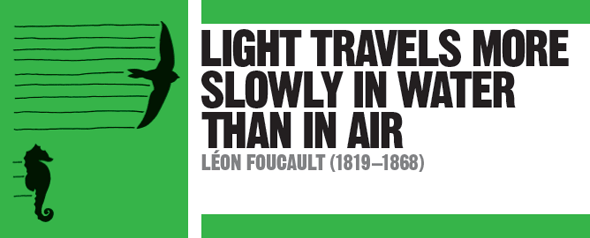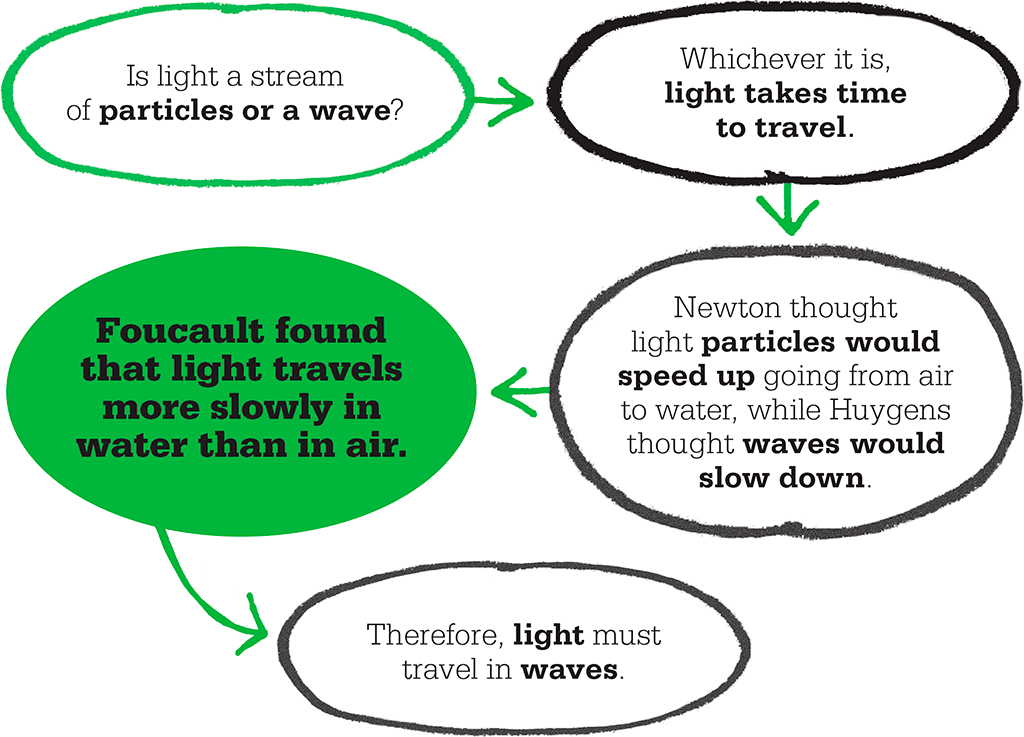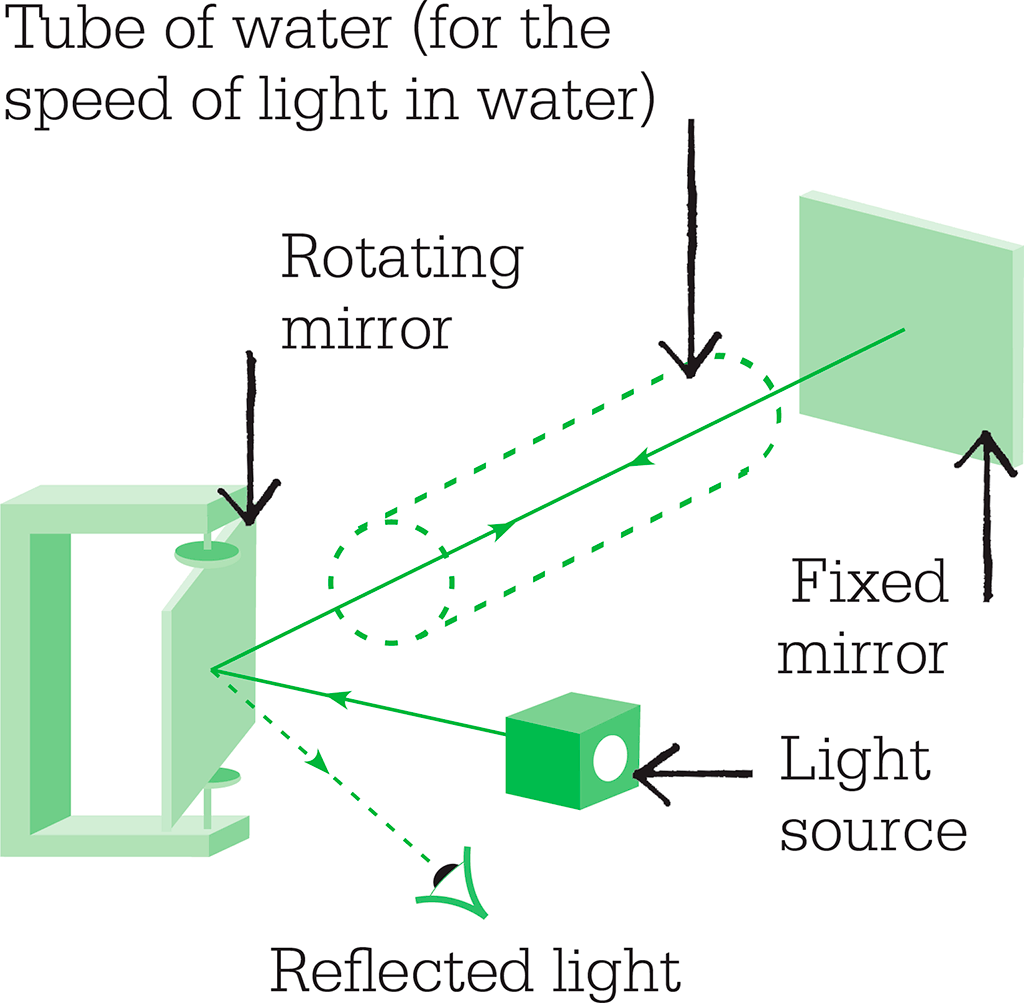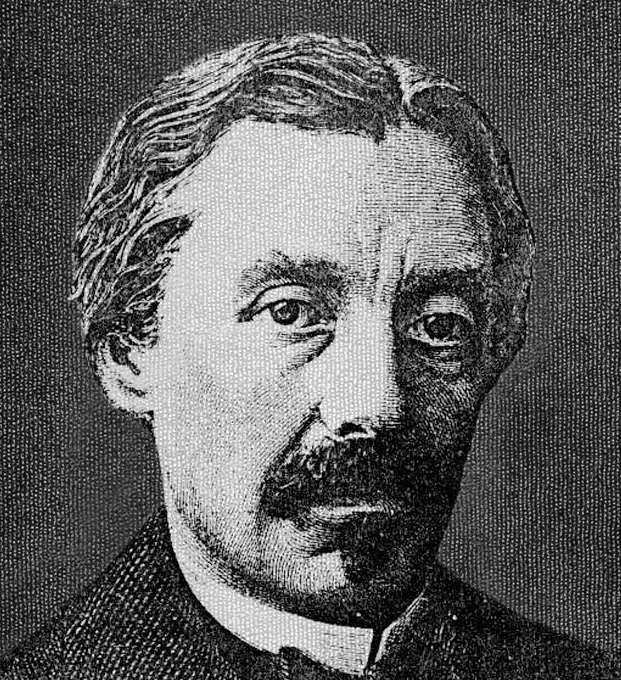
IN CONTEXT
Physics
1676 Ole Rømer makes the first successful estimate of the speed of light, using eclipses of Io, one of Jupiter’s moons.
1690 Christiaan Huygens publishes his Treatise on Light, in which he proposes that light is a type of wave.
1704 Isaac Newton’s Opticks suggests that light is a stream of “corpuscles”.
1864 James Clerk Maxwell realizes that the speed of electromagnetic waves is so nearly the same as the speed of light that light must be a form of electromagnetic wave.
1879–83 German-born US physicist Albert Michelson refines Foucault’s method and obtains a measurement for the speed of light (through air) that is very close to today’s value.
In the 17th century, scientists began to investigate light, and whether it had a finite, measurable speed. In 1690, Christiaan Huygens published his theory that light is a pressure wave, moving in a mysterious fluid called aether. Huygens thought of light as a longitudinal wave, and predicted that the wave would travel more slowly through glass or water than through air. In 1704, Isaac Newton published his theory of light as a stream of “corpuscles”, or particles. Newton’s explanation for refraction – the bending of a beam of light as it passes from one transparent material to another – assumed that light travels faster after it passes from air into water.
Estimates for the speed of light relied on astronomical phenomena, showing how fast light travels through space. The first terrestrial measurement was carried out by French physicist Hippolyte Fizeau in 1849. A beam of light was shone through a gap between the teeth of a rotating cogwheel. That light was then reflected by a mirror that was positioned 8km (5 miles) away, and passed back through the next gap between the wheel’s teeth. Taking the precise speed of rotation that allowed this to happen, together with time and distance, Fizeau calculated the speed of light as 313,000km/s (194,489 miles/s).

"Above all we must be accurate, and it is an obligation which we intend to fulfill scrupulously."
Léon Foucault
Contradicting Newton
In 1850, Fizeau collaborated with fellow physicist León Foucault, who adapted his apparatus – and made it much smaller – by reflecting the beam of light off a rotating mirror instead of passing it through the cogwheel. Light shining at the rotating mirror would only be reflected towards the distant mirror when the rotating mirror was at the correct angle. Light returning from the fixed mirror was reflected by the rotating mirror again, but as this mirror had moved while the light was travelling, it was not reflected directly back towards the source. The speed of light could now be calculated from the angle between the light going to and from the rotating mirror and the speed of rotation of the mirror.
The speed of light in water could be measured by putting a tube of water in the apparatus between the rotating and stationary mirrors. Using this apparatus, Foucault established that light travelled more slowly in water than in air. As such, he argued, light could not be a particle, and the experiment was viewed at the time as a refutation of Newton’s theory of corpuscles. Foucault refined his apparatus further, and in 1862, measured the speed of light in air as 298,000km/s (185,168 miles/s) – remarkably close to today’s value of 299,792km/s (186,282 miles/s).

In Foucault’s experiment, the speed of light was calculated from the difference in angle as a beam of light reflected back and forth between a rotating mirror and a fixed mirror.
LÉON FOUCAULT

Born in Paris, France, Léon Foucault was educated mainly at home before entering medical school, where he studied under the bacteriologist Alfred Donné. As he could not bear the sight of blood, Foucault soon gave up his studies, became Donné’s laboratory assistant, and devised a way of taking photographs through a microscope – he later teamed up with Hippolyte Fizeau to take the first ever photograph of the Sun. As well as measuring the speed of light, Foucault is best known for providing experimental evidence of Earth’s rotation, using a pendulum in 1851 and later a gyroscope. Although he had no formal training in science, a post was created for Foucault at the Imperial Observatory in Paris. He was also made a member of several scientific societies, and is one of 72 French scientists named on the Eiffel Tower.
Key works
1851 Demonstration of Physical Movement of Rotation of the Earth by Means of the Pendulum
1853 On the Relative Velocities of the Light in Air and in Water
See also: Christiaan Huygens • Ole Rømer • Isaac Newton • Thomas Young • James Clerk Maxwell • Albert Einstein • Richard Feynman